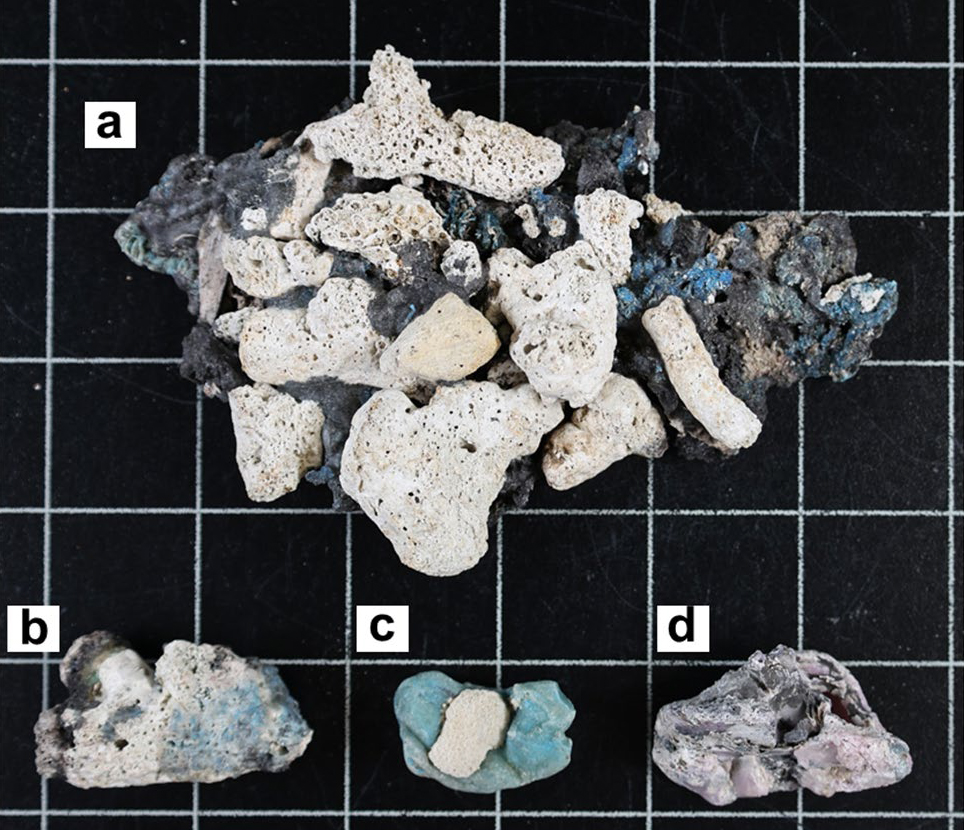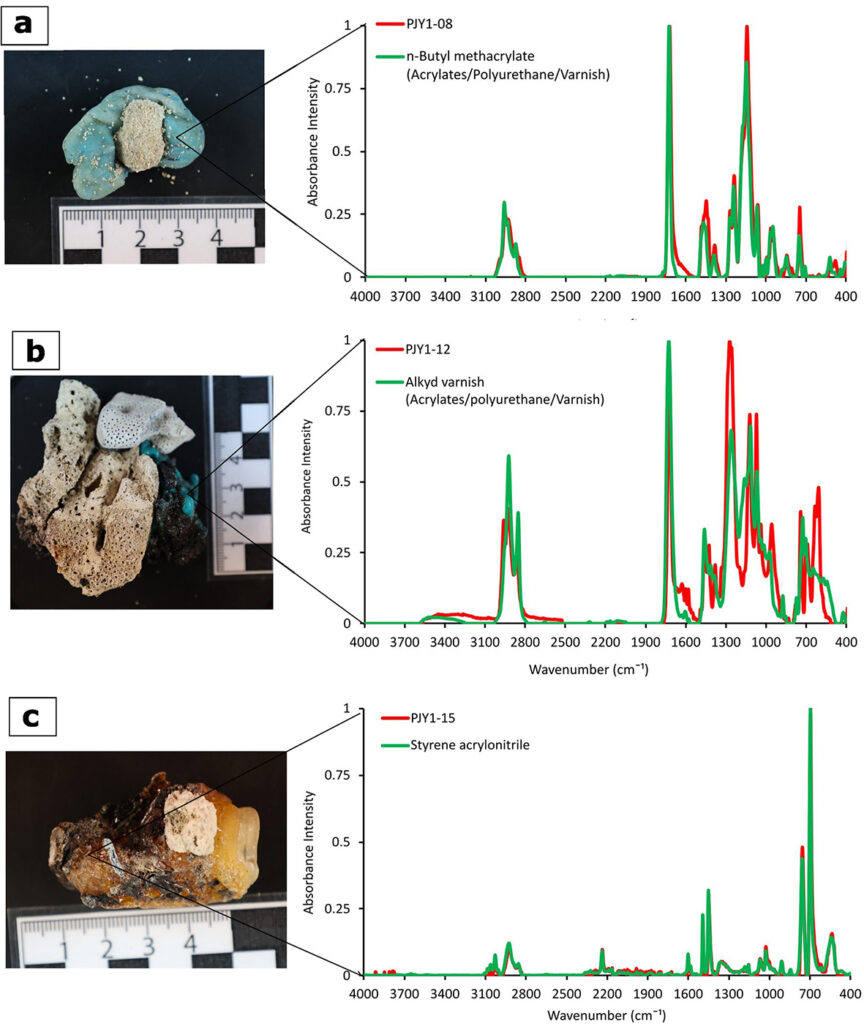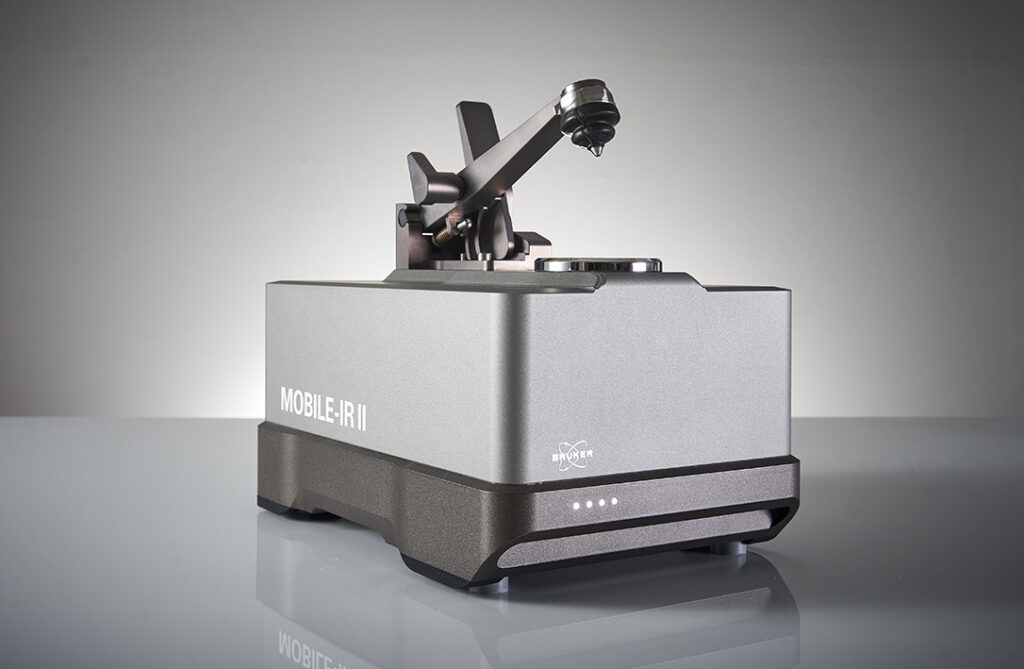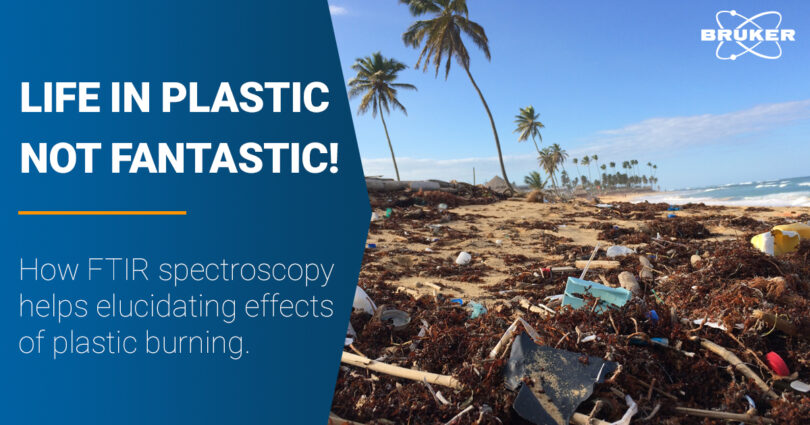Plastiglomerate analysis by FTIR unveils polymer constituents and weathering effects, therefore elucidating the effects of plastic burning.
But what is a plastiglomerate?
Plastic waste is a significant problem on beaches worldwide. In some areas, it accumulates for months or even years. Due to a lack of waste management infrastructure, this waste is often burned directly on the beach. By this, so called „plastiglomerate“ rocks made of melted plastic and natural components form.

Their potential impact on the environment has not been assessed in detail so far, even though they could pose a high ecotoxicological risk. In order to close this gap researchers set out to analyze these anthropogenic rocks for their composition.
Why use FTIR spectroscopy
For the study ATR Fourier-transform infrared (FTIR) spectroscopy was implemented. That comes as no surprise as it is able not only to determine the composition of the melted plastic but also give additional information about its degradation.
Using a Bruker FTIR spectrometer, the researchers identified the primary constituents of the samples to be Polyethylene (PE) and Polypropylene (PP) which accounted for 52% and 36% respectively.
This is not surprising.
Why? Because these polymers are widely prevalent in plastic consumer articles such as fishing lines, containers and packaging. However, the analysis also showed that the plastiglomerate can also contains a polyester-based alkylated varnish and a styrene-acrylonitrile copolymer. This is expanding the known range of polymers beyond common ones like PE and PP.

Additionally, the impact of burning on plastic weathering was assessed by FTIR. The presence of specific absorption peaks in FTIR spectra indicated oxidation and weathering of the plastic matrix.
The presence of oxidative-functional groups such as carboxylic acid and hydroxyl suggested the effect of solar photo-oxidation. An increase in absorption in the 1000–1200 cm−1 range pointed to the stretching vibration of C–O, potentially due to oxidative weathering.
This research was of course done in a lab – but what would you say if you could generate all this data directly in the field?
Field research? Easy with MOBILE-IR II!
Of course it is perfectly fine to use a lab-based FTIR for this kind of research. However, bringing your FTIR to the field holds valuable advantages, especially when considering the benefit of immediate material analysis and sample preservation.
By conducting real-time FTIR assessments directly on-site, you can swiftly gather crucial data about the material’s properties. This on-the-spot analysis enables a more informed selection of samples that warrant further laboratory investigation. Additionally, the preservation of sample integrity is ensured, as you avoid potential alterations or degradation that might occur during sample transportation.
Bruker’s ruggedly handsome MOBILE IR II offers you exactly this, even in a demanding terrain. And the best part? Result quality is lab-grade! Here is a quick list of some more mobile benefits:

You can find more information about the MOBILE-IR II on our homepage. And if you want to know more about FTIR and plastic waste go and check out our blog about marine plastic waste:
Utami, D.A., Reuning, L., Schwark, L. et al. Plastiglomerates from uncontrolled burning of plastic waste on Indonesian beaches contain high contents of organic pollutants. Sci Rep 13, 10383 (2023). https://doi.org/10.1038/s41598-023-37594-z








